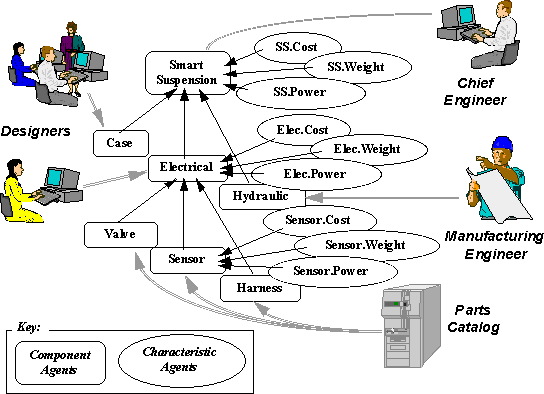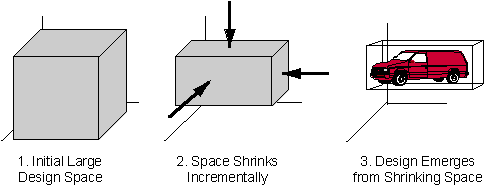Design becomes more and more decentralised with suppliers taking more and more responsibilities for the detailed design they supply. It is also very difficult to keep the design simple: If the desired object is difficult and costly to produce it can lead to frequent change in the design. Complex products are also less easy to structure. It is therefore very useful to represent components, designers and tools by reconfigurable agents which permit frequent changes. We can then assign different designing team to each specific component. However this can raise conflicts between or within teams disagreeing on the characteristics of their own components.
For example, in the case of car components, the teams might disagree on the budget to spend on each part because of weight, power, cost… and many other possible different characteristics.
The RAPPID System (Responsible Agents for Product-Process Integrated Design) helps the design of a process to make the coordination between teams easier with market dynamics and set-based reasoning.
Market dynamics
We define two sorts of agents, characteristic and component agents.
Component agents represent the actual parts the teams are working on (they are in fact interfaces for human designers). Characteristic agents represent the characteristics of each part (in the previous example, this would be the weight, power, volume…). RAPPID proposes some sort of marketplace for the designers. Characteristic agents keep the availability of a characteristic and designers bid for those. However, in order to purchase increments for a characteristic, designers may need to sell another one to raise resources for the purchase. This system permits having some balance between the characteristics of each part and solving the conflict problems between teams.

Above: Diagram of product design. Source.
Set-based
reasoning
In order
to make the design process converge towards the final
solution, RAPPID uses set-based reasoning. That is, the
chief engineer must guide the design team in a process of
progressively shrinking the design space until the product
emerges from it. Each team shrinks the design on its own
component at each step ensuring they remain within their
specification and avoiding problems with interconnection
with other teams.

Above: Design process, demonstrating how the design space
shrinks until the product emerges. Source.